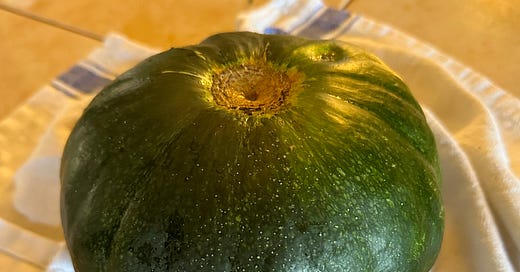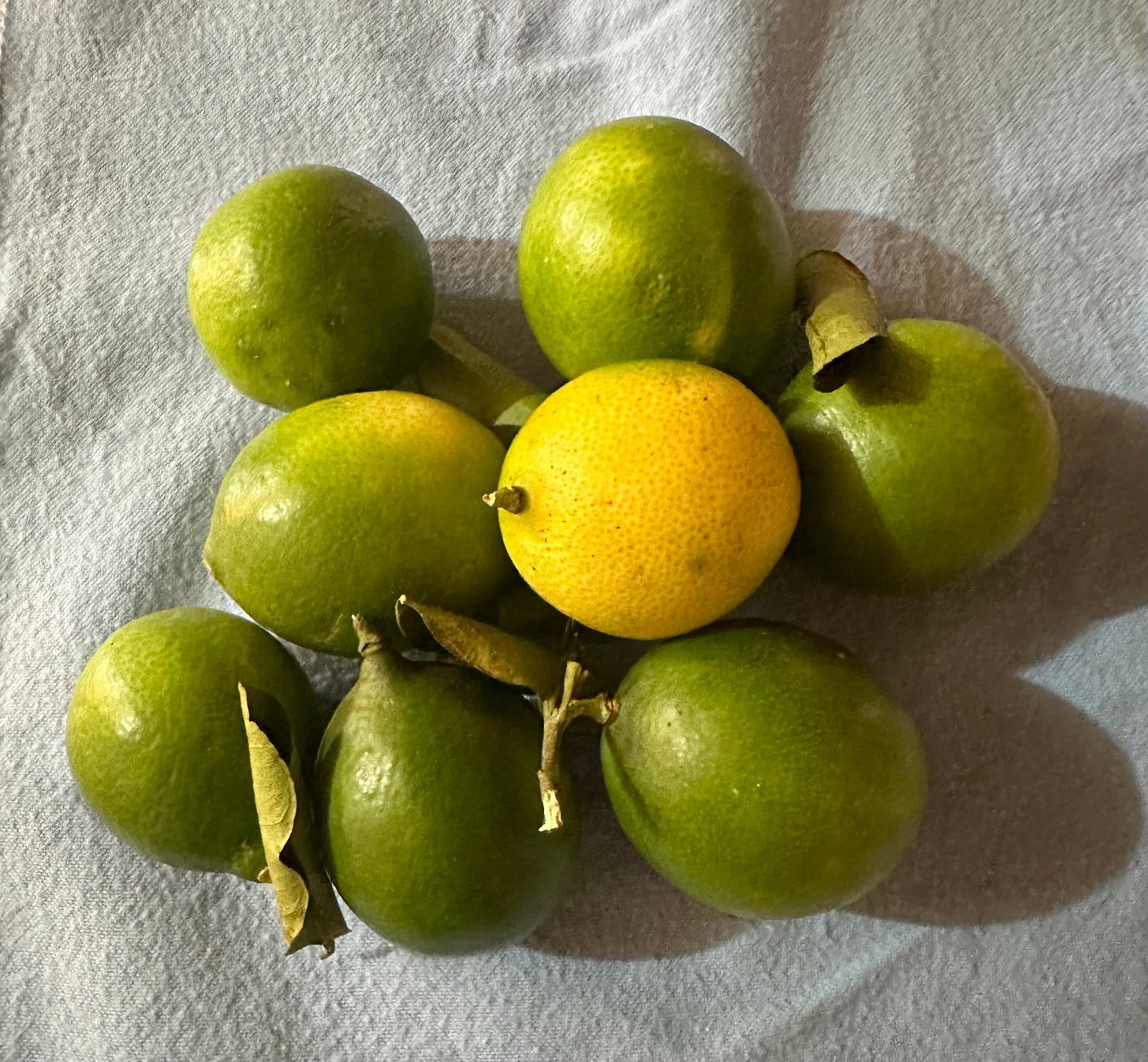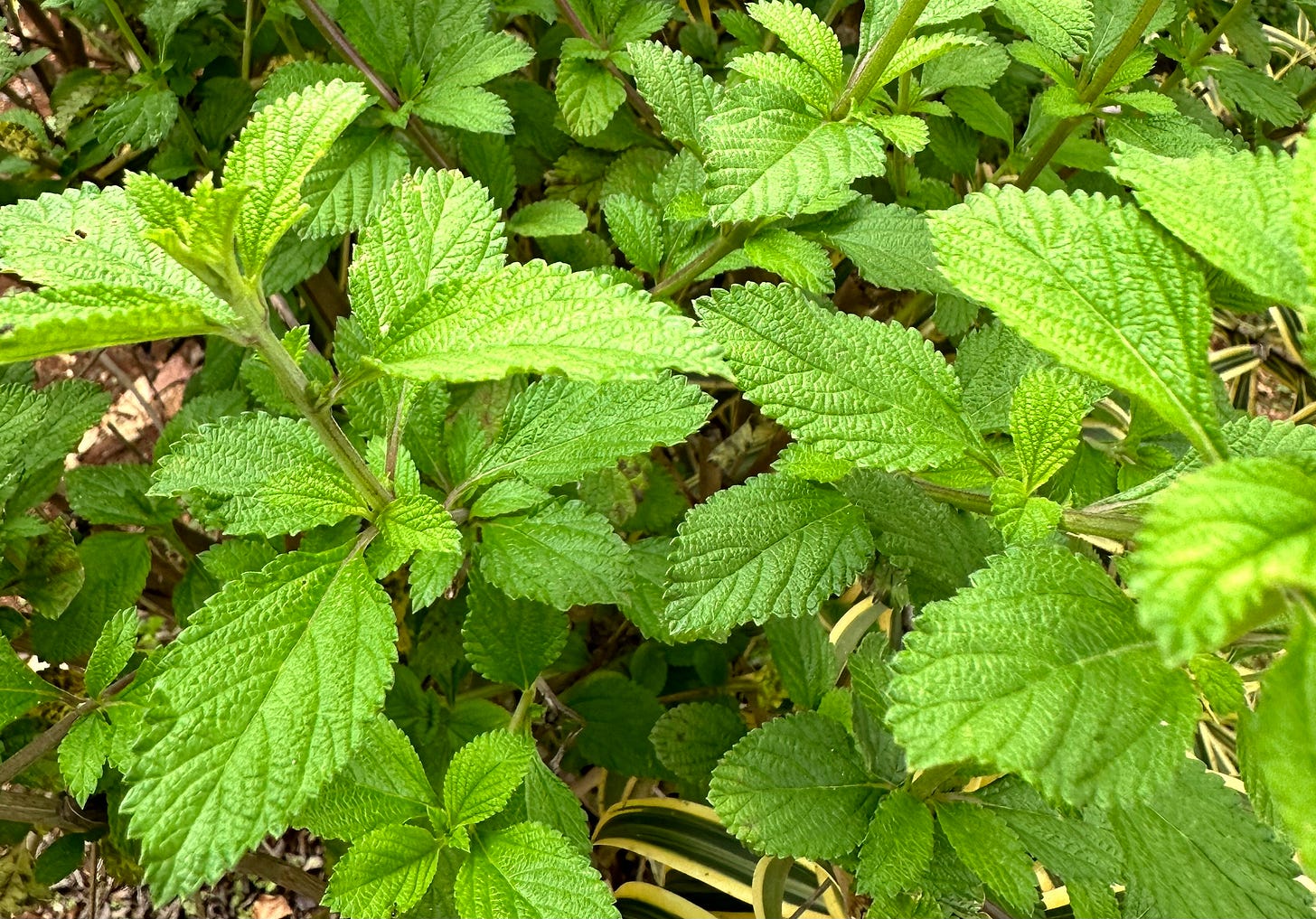Today was the day my landscape guy Geiner (pronounced Hay-ner) came to whack the weeds, trim up the bougainvilleas, and saw off that troublesome limb of the mystery citrus at the bottom of the garden.
Citrus trees are no longer an oddity or a luxury to me. Here in the tropics, I have two green-orange trees—one very sweet and the other less so but still delicious when juiced—and they’re both heavy with fruit right now. For some reason, both these trees fruit twice a year, once at the beginning of the dry season, and again at the beginning of the rainy season.
One of these is planted on a slope so steep that it’s impossible for me to collect the fruit except for a few low hangers reachable from the path. With sad eyes, I watch as the fruits ripen, turn black and moldy, fall off, and eventually roll down the hill to the quebrada. Alas. The cycle of Nature.
The other orange tree, however, produces enough fruits to keep me in vitamin-rich orange juice most of the year! And squeezing them by hand keeps my arms toned and buff. Well, maybe not buff or toned, and who am I kidding about upper arms at my age. Sigh.
I have a prolific “Panama lemon” behind the chicken coop, also nearly impossible to reach until Chito built a walkway incorporating a stack of old tires found at the back of my property. The lemons we gringas are accustomed to are seldom seen in Costa Rica.
My Panama lemon tree produces small lime-green fruits that taste exactly like limes when immature, yet when suave (soft or ripe) they are lemons, but greenish. Versatile for margaritas and Cuba libras when young, perfect for lemonade con hierba buena when mature. A mound of these babies waits on the kitchen counter to be juiced and frozen into cubes, stashed for a rainy day happy hour.
The trouble with many citrus trees is they have thorns. I had a Meyer lemon growing in my dining room window at my former home, and it attacked me every time I gave it a drink of water. But those sissy thorns were nothing compared to the two-inch spikes on the limbs and trunk of that mystery citrus at the base of the hill out back. Geiner says these are delicious, similar to limes, and he was reluctant to cut off that low-hanging branch that daily threatened to poke my eyes out. But I insisted, and now the deed is done.
Last week, Geiner noticed several ripening calabasas (squashes) growing over the top of the compost pile. A bit leery about critters that might lurk beneath the vines—snakes, spiders, fire ants, unknown unknowns—I was content to leave them be, thinking maybe Fred the iguana or an agouti visitor might want them. But Geiner dived in with Tico fearlessness, collected four beauties and left with three of them, his family enjoying squash soup for dinner that night.
Tonight, I roasted mine in the air fryer with butter, a little brown sugar, a touch of harissa, then drizzled with maple syrup. Delicioso! Yes, there is such a thing as a free lunch.
Earlier this week, I collected leaves from a mint-like shrub outside my back porch, which Chito says makes tea that’s good for stomach problems. Or maybe it was to help me sleep. I have several similar bushes and I can’t remember which one fixes which problem. Nevertheless, I washed the leaves and tossed them in my dehydrator yesterday, and today buzzed up the crispy dried leaves in the processor for tea! I will someday discover whether they’re good for my digestion or my dreams.
I’m continually surprised by the bounty of my tiny plot, especially since the previous owner overused herbicides for a full decade to prevent the merest hint of green from popping up. The entire property was bare earth when I arrived—dead orange clay, lifeless, no microorganisms, no roots, no bugs. Only ants could survive such a toxic environment—fire ants, tree ants, and those tiny black ants that attack and chomp bare toes.
With the help of Hungry Planet Organics and their amazing BioSoil product, life is returning to the clay flats of my “garden." When herbicides are used, especially products like RoundUp (glyphosate), everything dies, including all the soil inhabitants. Soil is a living entity, and if there are no microorganisms—bacteria, fungi, worms and insects—there is no chance for plants to grow. BioSoil penetrates deeply and modifies the structure of the soil to allow compacted, lifeless soil to once again support life. And it’s working!!!
Now, with the rainy season upon us, green is slowly returning, grass begins to cover the slopes, and new discoveries await. Stay tuned!
Pura vida!






